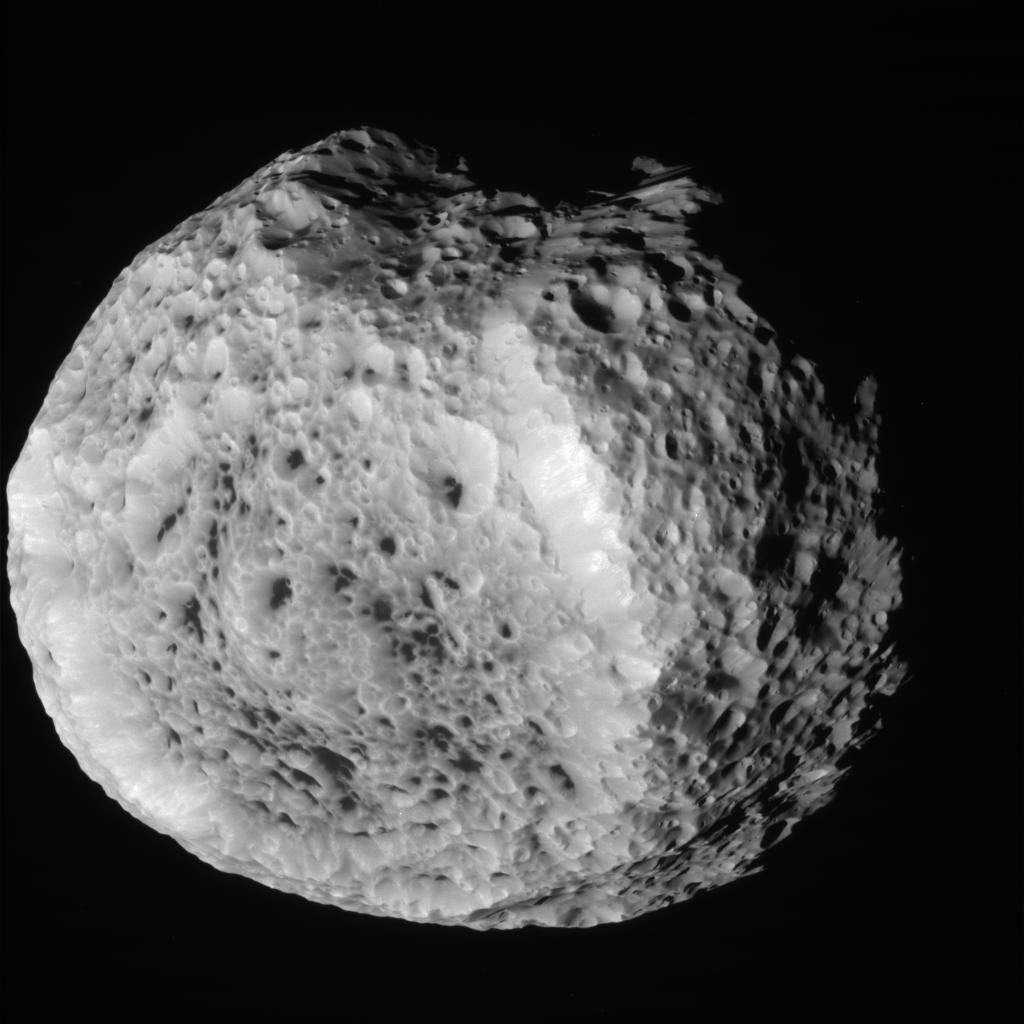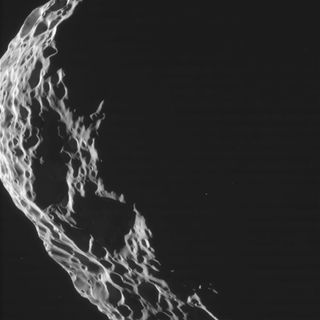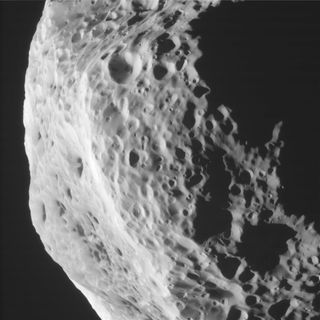Saturn's Odd Pockmarked Moon Revealed in New Photos

NASA's Cassini spacecraft has captured new photos of Saturn's ugly-duckling moon Hyperion that show its cratered surface up close.

The pictures come from Cassini's Aug. 25 flyby of the Saturn moon Hyperion. The pass, the spacecraft's second closest encounter with the moon, brought Cassini within about 15,500 miles (25,000 kilometers) of Hyperion’s surface.
Of all Saturn’s 62 moons, Hyperion is one of the strangest. It is an ungainly, misshapen space rock hurtling on a chaotic orbit around the ringed giant. [See the photos of Saturn's moon Hyperion]
The moon is small — only about 168 miles (270 kilometers) across — and has an irregular shape and surface appearance. As it tumbles along in orbit, the moon rotates unpredictably, preventing scientists from predicting in advance exactly what terrain the spacecraft's cameras would image during this flyby.
However, this flyby's closeness has likely allowed Cassini's cameras to map new territory, scientists said.
The images should help researchers improve color measurements of the moon and determine how the moon's brightness changes as lighting and viewing conditions change, which can provide insight into the texture of the surface. The color measurements provide additional information about different materials on the moon's deeply pitted surface.

Get the Space.com Newsletter
Breaking space news, the latest updates on rocket launches, skywatching events and more!
This isn't the first time Cassini has snapped close-up photos of the Saturn moon.
Cassini's closest encounter with Hyperion was on September 26, 2005, when the spacecraft flew approximately 310 miles (500 kilometers) above the moon's surface.
Cassini's next flyby of Hyperion will be on Sept. 16, 2011, when it passes the tumbling moon at a distance of about 36,000 miles (58,000 kilometers). [Cassini Photos: Saturn's Rings and Moons]
NASA's Cassini spacecraft launched in 1997 on a mission to study Saturn, the solar system's second largest planet. The probe arrived in orbit around the planet in 2004, and is expected to continue taking observations through at least 2017.
You can follow SPACE.com senior writer Clara Moskowitz on Twitter @ClaraMoskowitz. Follow SPACE.com for the latest in space science and exploration news on Twitter @Spacedotcom and on Facebook.
Join our Space Forums to keep talking space on the latest missions, night sky and more! And if you have a news tip, correction or comment, let us know at: community@space.com.

Space.com is the premier source of space exploration, innovation and astronomy news, chronicling (and celebrating) humanity's ongoing expansion across the final frontier. Originally founded in 1999, Space.com is, and always has been, the passion of writers and editors who are space fans and also trained journalists. Our current news team consists of Editor-in-Chief Tariq Malik; Editor Hanneke Weitering, Senior Space Writer Mike Wall; Senior Writer Meghan Bartels; Senior Writer Chelsea Gohd, Senior Writer Tereza Pultarova and Staff Writer Alexander Cox, focusing on e-commerce. Senior Producer Steve Spaleta oversees our space videos, with Diana Whitcroft as our Social Media Editor.
Most Popular

